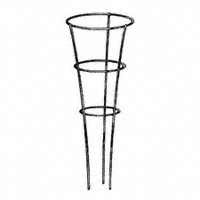1. Decide on the vegetables you want to plant. Why do this first you say? The main reason is this may help determine the size of garden you need to prepare. For example, if you decide you want to plant corn or watermelons then this will require more room than just planting bell peppers and onions. This may have an impact on the location of the garden also. Speaking of location, on to tip number 2.
2. Picking a location for your garden. Choose a spot for your garden that is relatively flat, (that will help with water runoff issues). You don’t want your garden to wash away during a rainstorm or when you irrigate it. You will also need to find a spot that gets the most sunlight throughout the day. Most garden plants need adequate sunlight to grow and produce properly. Consider the size of the garden also. Remember, the larger the garden, the more work involved, so if your new to gardening, you may want to start small.
3. Prepare the land. First, if grass or weeds are present, you must get rid of them. The most common way is to till the ground. Another option is to cover the area of the garden with black plastic sheeting for a few days to few weeks to kill the grass and weeds in the affected area.
In order to have a garden that produces a good quantity and quality of vegetables, the soil needs to have adequate fertilizer and nutrients. You need to have a soil test performed to find out if the soil needs potash, lime, nitrogen, (fertilizer), etc, in order to bring the soils ph to an optimum level. Contact your local cooperative extension service on how to get a soil test. Or, you can purchase soil test kits at your local garden center. Once you do the test, then you can add the needed ingredients plus compost, mulch and humus and till all ingredients into your soil.
4. Make a planting layout. This will help you determine if everything you want to plant will actually fit in your garden. Be sure to leave room for plants to grow without overcrowding them and also room for walkways so you can access all the plants for harvesting. For example, leave about 36 inches between rows of peas when you plant the seed, (remember, they will be a lot closer together once the peas are ready to pick). And you will need more room for vine crops such as watermelon, cucumbers, etc. also, plan for your taller plants, tomatoes for example, to be planted on the north end of the garden. That way other smaller plants will not lose sunlight because of taller plants blocking the sun.
5. Purchase your plants and seeds. So now you know what you want to plant, so its time to go shopping. Some plants should be sown into the garden directly from seed such as peas, squash, cucumbers, corn, etc. other plants should be purchased at your local garden center.
Once you have done each of these steps, you should be off and running to a fabulous garden!
Tuesday, February 19, 2008
Subscribe to:
Post Comments (Atom)



No comments:
Post a Comment